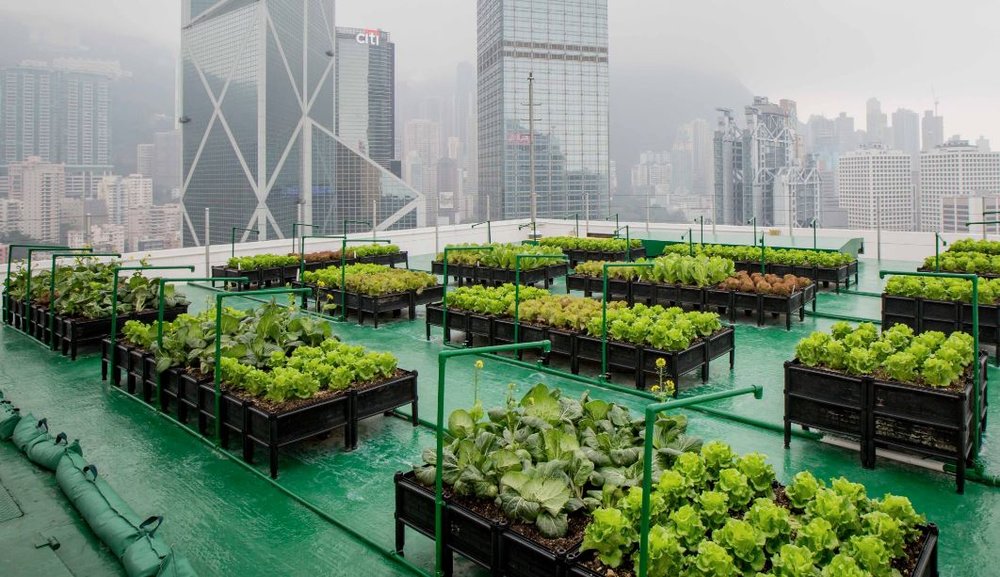The City Blooming Statements
The City Blooming Statements
Blog Article
Some Of City Blooming
Table of ContentsRumored Buzz on City BloomingThe Only Guide for City BloomingThe Basic Principles Of City Blooming Some Known Incorrect Statements About City Blooming The Definitive Guide to City Blooming
Interested in expanding food to buy in the City of Chicago? Considering starting a community garden? Modifications to the Chicago Zoning Statute permit agricultural usages like community yards and city farms in lots of components of the city. Below is a list of often asked questions relating to the policies and regulations that growers must think about when preparing a metropolitan agriculture project.
The zoning change does not modify any type of various other codes dealing with composting, structure licenses, purchasing or leasing City possessed property, organization licenses or ecological contamination. There are existing codes that control these concerns and they remain completely impact and might be applicable to your job. Community yards are typically possessed or managed by public entities, public organizations or community-based companies and kept by volunteers.
Urban ranches expand food that is planned to be sold, either on a not-for-profit or for-profit basis. Due to their commercial objective, urban farms need a business certificate. Yes. An area yard is enabled to market excess produce that was expanded on site if the sales are accessory or subservient to the yard's main objective described above.
Some Known Questions About City Blooming.
Composting is permitted however only for plant product that is produced and made use of on site. The amount of compost material can not go beyond 25 cubic lawns at any given time according to the standards in 7-28-715 of the City's Municipal Code. Yes. Due to the fact that the dirt at many brand-new yard websites requires changing, garden compost, soil, timber chips, or other materials can be obtained to construct or boost the growing area - container and raised bed gardening etc..

If a structure license is called for then the hoophouse will be thought about an accessory structure. You can discover out more about the structure permit needs by speaking to the Department of Buildings. The 25,000-square-foot size limit is intended to avoid a solitary area garden from controling a provided block or interfering with the block's existing property or business character.
The limit does not relate to gardens located in Public Open Area (POS) districts. Can there be greater than one neighborhood garden that is 25,000 square feet on a single block? Yes. The dimension limit uses to individual gardens, not to private blocks. No. Fencing is not required, however, gardens that have large parking lot may be called for to mount fence or other landscaping features.
Little Known Questions About City Blooming.
B1 & B2 areas call for that all commercial use tasks be performed inside your home. R areas limit business activity. The policies reflect the function and intent of the Zoning Code. Is fence required for metropolitan farms? Yes. Fences may be required, along with landscaping and screening, for sure car park locations and exterior work or storage space areas depending upon location and the particular activity taking area.
Urban ranches call for structure permits and zoning authorizations prior to building (eco-friendly practices). Other kinds of city testimonial might be required depending on details structures, tasks, size, landscape design, licensing, public health and stormwater administration concerns.
The Division of Business Matters and Consumer Security can assist identify the particular type of business license that's required. Off street parking is required for a lot of business projects in Chicago. The required number of car parking areas is based on the number of employees functioning on website and not the square footage of the expanding room.
The Greatest Guide To City Blooming

A metropolitan farm can sell compost product created on website, nonetheless, the operation needs to abide with the regulations in 7-28-715 of the Chicago Municipal Code. Aquaponic systems are allowed inside your home on urban farms in many zoning districts.
Up to 5 hives or swarms of honey bees may be maintained as an accessory usage. Nonetheless, beekeepers should sign up with the Illinois Department of Farming. To learn more regarding the recommended zoning change you may get in touch with the Department of Housing and Economic Development, Bureau of Preparation and Zoning at 312.744.8563.
, which takes place in country areas at the edge of suburban areas.
Examine This Report on City Blooming
It can entail a movement of natural growers, "foodies" and "locavores", who seek to form social networks started on a common ethos of nature and neighborhood holism. These networks can develop using formal institutional assistance, becoming incorporated right into regional community planning as a "transition community" site web movement for sustainable metropolitan development.
The more straight access to fresh vegetable, fruit, and meat products that may be become aware through metropolitan agriculture can enhance food safety and security and food security while reducing food miles, leading to reduced greenhouse gas discharges, thus adding to climate modification mitigation. Several of the first evidence of metropolitan agriculture originates from Mesopotamia.
Report this page